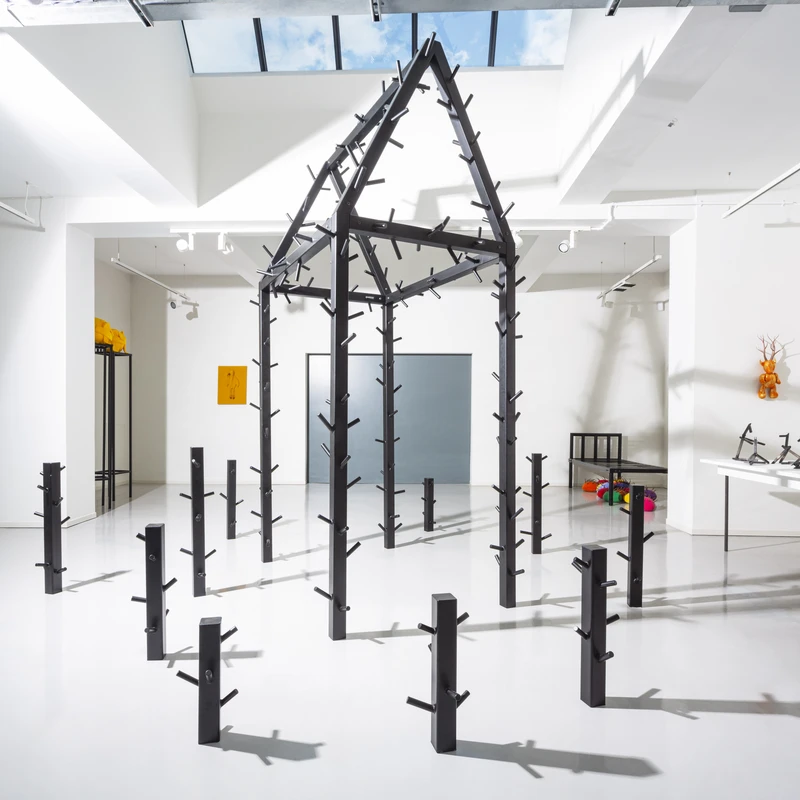Permindar Kaur: Outgrown
3 Sep-13 Nov 2022


Internationally renowned artist Permindar Kaur stages her ambitious project Outgrown at The Art House, Wakefield.
After studying in Sheffield in the late 1980s, the installation artist Permindar Kaur returns to Yorkshire to stage her latest exhibition in Wakefield. Outgrown sees Kaur explore the juxtaposition of ‘private and public’ by converting an extremely public space, the gallery at The Art House (TAH), into a private home.
Having gained international recognition in the early 1990s, Kaur will present work made early in her career, alongside brand-new works co-created with local communities with lived experiences of seeking asylum in Wakefield, made during her summer residency at TAH.
Kaur’s approach to art is playful, using childlike objects to explore the territory of cultural identity, home, and belonging. She invites us into a place of familiarity by creating playful works from everyday surroundings which simultaneously disarm and unsettle us.
Outgrown brings together artwork which spans four decades in the gallery at The Art House. Working with simple forms, such as furniture, beds, tables and chairs, and toys, Kaur reframes and manipulates these domestic objects, removing their meanings to invoke unsettling feelings of the uncanny and surreal. Kaur explains “I am interested in creating an environment which at first glance appears safe and yet is a distortion of that which is intimate and secure, an illusion of security.”
Outgrown invites audiences to consider the question ‘where is home’ – on ongoing investigation central to Kaur’s practice, and a timely social issue which has never been more relevant. Through the exhibition, Kaur explores concepts of who we are and where we belong. She will transform the gallery into a place of home; blurring the boundaries of public and private spaces, domestic settings and places of work.
Central to the exhibition is Overgrown House (2020), a steel structure which takes the form of a three-metre-tall abandoned house, with growing ‘vines’ sprouting from the ground, consuming or reclaiming the structure. A recurring theme in Kaur’s work is protection and defence. A home is a place of comfort and shelter, yet with Overgrown House, the walls and roof have been lost - opening it to the outside world. Kaur prompts us to consider two opposing possibilities; is the house left vulnerable to attack or, is it possible the ‘vines’ are further protecting what would be inside the dwelling?
This constant back and forth questioning is integral to Kaur’s work, which today, have a great sense of relatability. The pandemic has merged private homes into working spaces and more recently, 100,000 people in the UK have signed up to invite Ukrainian refugees seeking safety into their homes. The concept and boundaries of ‘home’ have never been more in flux.